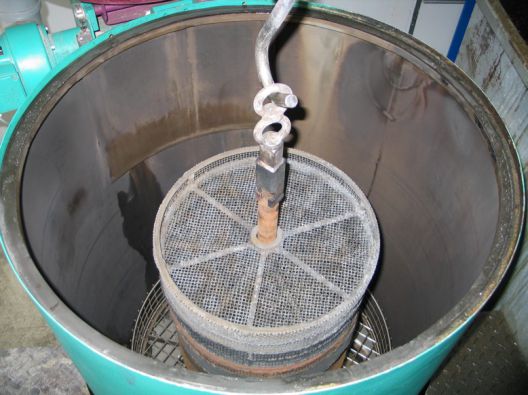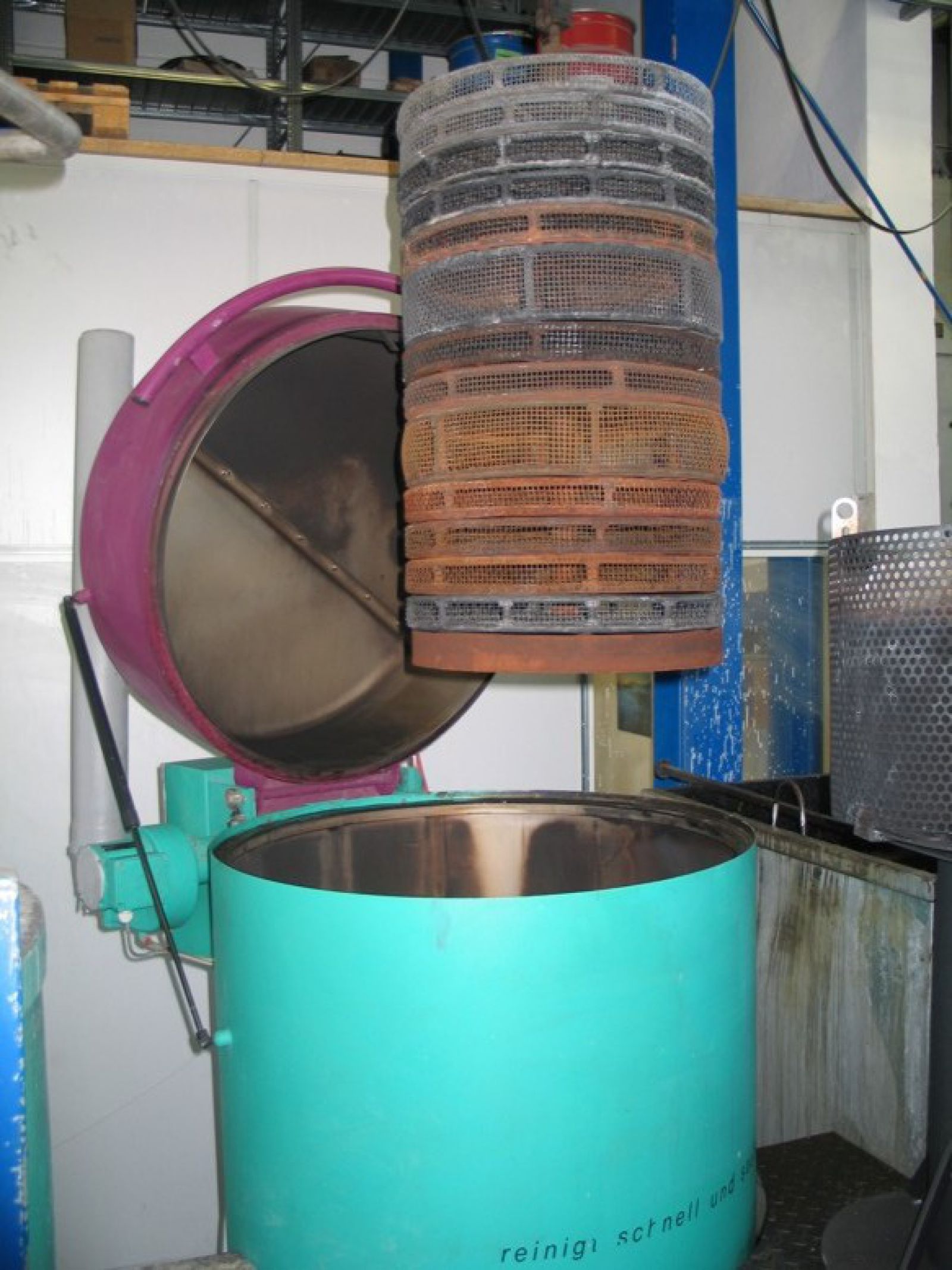Heat treatment adds value, parts cleaning is securing it. Therefore, both processes are the key elements of value-added chains in hardening shops. This is why liquid-nitriding is always followed by a washing process that removes encrusted salt residues and oil from the parts’ surfaces. In the hardening shop Weber & Söhne Co. KG in Starnberg near Munich, this is done since recently by spray cleaning. For this purpose, a top loader with a particularly deep cleaning chamber was installed (figure 1).
This machine was built by the engineering company PERKUTE Maschinenbau GmbH, Rheine, on the basis of its Top Loader SP80. It is almost identical with the company’s standard system. Only the height of the systems deviates from the standard dimensions, since the cleaning chamber is deeper. This allows accommodating a complete batch in the top loader. The batch no longer needs to be reloaded manually. Quite an improvement compared to the situation before the new system was installed, when the parts were still cleaned in a dipping bath and frequently needed to be transferred one by one. This was time-consuming and in the long run also did not render satisfactory results. As an example, the dipping bath could not be heated. In order to enhance the cleaning effect, compressed air was being blown into the bath through nozzles.
Today, a complete batch passes through all the processes in one go. A manually operated crane transfers the batch rack between the various stations. Therefore the parts only need to be picked up by hand at the very end, when they are packed. Other than there, this is only required at the beginning, when the batch is being put together – after the process cycle has been defined and the job card has been issued. Subsequently, the parts are placed into baskets which –stacked on top of each other– will form the batch rack. This allows flexibility regarding the quantities to be processed. The hardening shop Weber processes individual parts or smaller series – with a lot size of 1 to 10 000. This includes many small parts that can sometimes go below 10 grams.
Each batch is a challenge. Parts’ geometry and weight frequently change. For this reason, the top loader cleans with large quantities of water. It is heated to between 40 and 50 °C and blasted diagonally downwards through the basket walls by fan nozzles. These nozzles are not only positioned on top, below the system cover, but also sideways within the chamber at an angle of 45 degrees, while the nozzle diameter is larger in the top area. This design ensures that more water flows from basket to basket. The result is a cleaning effect similar to flooding, which has a double benefit: also those parts are cleaned that are not directly hit by a spray. Furthermore, the spray pressure can be reduced to such an extent that small parts will remain in place within the baskets. During the cleaning process the cylinder-shaped batch rack is spinning.
Water-based cleaning without chemical agents
The result is achieved purely by the water’s cleaning power and mass effect. No chemical agents such as surfactants are required. When complex parts geometries are to be cleaned, the cleaning period should rather be extended. This includes blowing out the bores by compressed air. The reason is that many parts are impact-sensitive. Therefore, a final cleaning stage by compressed air gun might be required. This is justified by the parts’ production stage: mostly the parts are supplied already with their final dimension. The liquid-nitriding is usually the last production step prior to assembly or delivery to the client. It allows a nitration hardness depth of 10 to 30 µm. At the end, the parts must be free of any oil and salt.
In the hardening shop Weber, all parts are therefore checked before packaging. There must not be any oil film or white salt residues on the grey parts surfaces. Both are flushed away by the washing water collecting in the tank, where the oil separates from the water and can be skimmed by a gravity separator. The washing water, however, is continuously circulated in the cleaning cycle. The pump has an output flow rate of 280 l/min. The dissolved salt is removed with the washing water when the bath is replaced and will finally go into a evaporator, where it is recovered in dry form for disposal. The smaller the parts, the more salt from the hardening shop will be brought into the top loader, which in turn will reduce the bath service life.
The top loader has been manufactured completely from stainless steel. This guarantees that it is protected from corrosion. Due to the dimensions, it was possible to install the roughly 2 m high system next to the salt bath on an elevated base platform using the space economically. Contrary to a front loader, it does not require any space for loading and unloading. By means of the crane, the batch rack is lowered into the 1150 mm deep cleaning chamber from above (figure 2). Compared to the standard system SP 80, the top loader’s chamber is 650 mm deeper, which allows the extended system cover to be closed over the batch rack’s crane eye. In this way, the hardening shop Weber cleans six to eight batches per day. This is achieved by swinging the crane back and forth to the system, while other baths are also strategically positioned in its area of operation around the base platform.
Required parts cleaning after virtually any hardening process
In the hardening shop Weber, the liquid-nitriding can be followed by a reoxidation stage. The result is parts with graphite-black surface and increased corrosion resistance. Furthermore, the shop offers vacuum and inert gas hardening, quenching and tempering and various annealing processes. Virtually all these methods require subsequent parts cleaning, except for vacuum hardening, which in the hardening shop Weber is done at 1250 °C. This endows in particular components made of tool steels with a high hardness and resistance. Overall, the range of processes covers a wide spectrum of parts in mechanical and plant engineering and by now even comprises the automotive industry. As a result, the hardening shop will be certified this year as an automotive supplier for individual parts in smaller lots.








 Please let us know!
Please let us know!